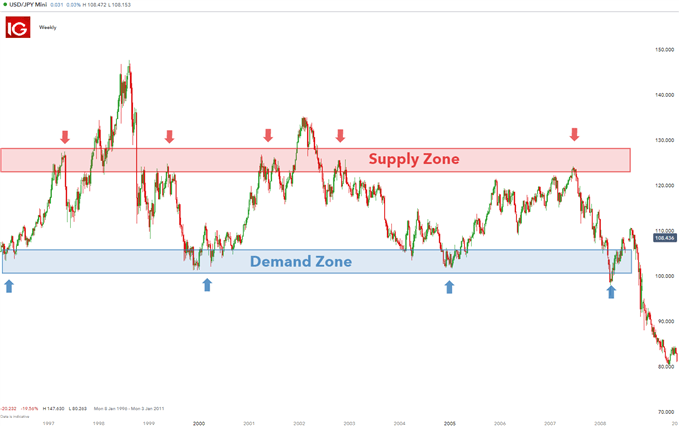supply and demand
Prices move because of supply and demand. When demand is greater than supply, prices rise. When supply is greater than demand, prices fall. Sometimes, prices will move sideways as both supply and demand are in equilibrium.
Market psychology plays a major role as traders and investors remember the past and react to changing conditions to anticipate future market movement.
In the financial markets, prices are driven by supply (down) and demand (up) excesses. Supply is synonymous with bearish, bears, and selling. Demand is synonymous with bullish, bulls, and buying.
As demand increases, prices advance, and as supply increases, prices decline. When supply and demand are equal, prices move sideways as bulls and bears slug it out to gain control.
Support is the price level at which demand is considered strong enough to prevent the price from declining further.
Resistance is the price level at which selling is thought to be strong enough to prevent the price from rising further.
If a support or resistance level is broken, the relationship between supply and demand has changed. A resistance breakout signals that the bulls (demand) have gained the upper hand, and a support break signals that the bears (supply) have won the battle.
Equilibrium and Stock Strategy
Generally, an over-supply of goods or services causes prices to go down, which results in higher demand—while an under-supply or shortage causes prices to go up resulting in less demand.
The balancing effect of supply and demand results in a state of equilibrium.
A market is said to have reached equilibrium price when the supply of goods matches demand.
In reality, markets are never in perfect equilibrium, although prices do tend toward it.
What Happens During Market Equilibrium?
Stock Strategy
When a market is in equilibrium, prices reflect an exact balance between buyers (demand) and sellers (supply). While elegant in theory, markets are rarely in equilibrium at a given moment. Rather, equilibrium should be thought of as a long-term average level.
At each price, the sellers decide how many units they want to offer or supply at this price, and the buyers decide how many units they want to buy or demand. The quantity supplied will be higher, the higher the market price of the good, whereas the quantity demanded will be lower, and the higher the market price of the good.
supply and demand determine the pricing of stocks and other securities.
Economic data, interest rates, and corporate results influence the demand for stocks.
Market dynamics, economic conditions, and changes to economic policy tend to impact the overall supply of stocks.
Both the supply and demand for stocks tend to amp up in response to initial public offerings, spinoffs, or the issuing of new shares.
The law of demand posits that demand declines when prices rise for a given resource, product, or commodity. Demand increases as prices fall. On the supply side, the law posits that producers supply more of a resource, product, or commodity as prices rise. Supply falls as prices fall.
The price at which demand matches supply is the equilibrium, the point at which the market clears. The law of supply and demand is critical in helping all players within a market understand and forecast future conditions.


تبصرہ
Расширенный режим Обычный режим